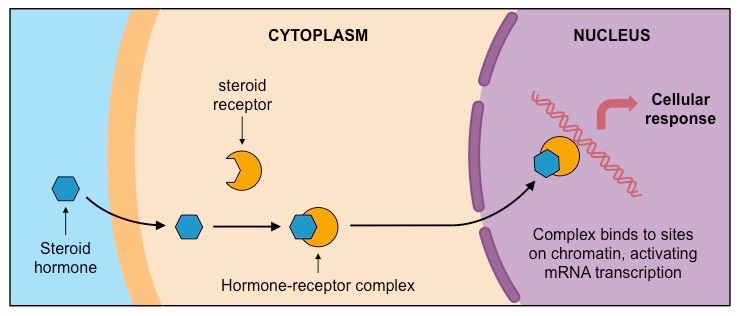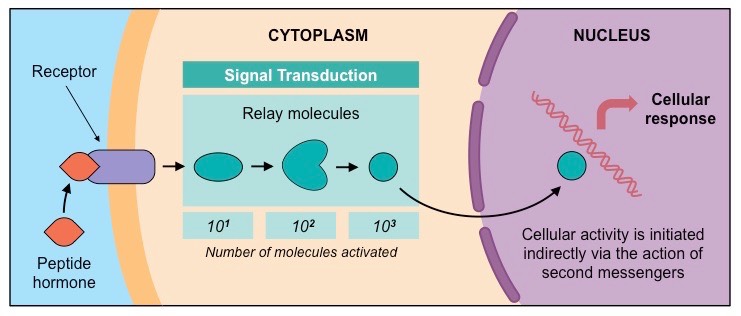![]()
Understanding:
• Steroid hormones bind to receptor proteins in cytoplasm of target cells to form a receptor-hormone complex
• The receptor-hormone complex promotes the transcription of specific genes
Steroid Hormones
- Steroid hormones are lipophilic (fat-loving) – meaning they can freely diffuse across the plasma membrane of a cell
- They bind to receptors in either the cytoplasm or nucleus of the target cell, to form an active receptor-hormone complex
- This activated complex will move into the nucleus and bind directly to DNA, acting as a transcription factor for gene expression
- Examples of steroid hormones include those produced by the gonads (i.e. estrogen, progesterone and testosterone)

![]()
Understanding:
• Peptide hormones bind to receptors in the plasma membrane of the target cell
• Binding to membrane receptors activates a cascade mediated by a second messenger inside the cell
Peptide Hormones
- Peptide hormones are hydrophylic and lipophobic (fat-hating) – meaning they cannot freely cross the plasma membrane
- They bind to receptors on the surface of the cell, which are typically coupled to internally anchored proteins (e.g. G proteins)
- The receptor complex activates a series of intracellular molecules called second messengers, which initiate cell activity
- This process is called signal transduction, because the external signal (hormone) is transduced via internal intermediaries
- Examples of second messengers include cyclic AMP (cAMP), calcium ions (Ca2+), nitric oxide (NO) and protein kinases
- The use of second messengers enables the amplification of the initial signal (as more molecules are activated)
- Peptide hormones include insulin, glucagon, leptin, ADH and oxytocin

